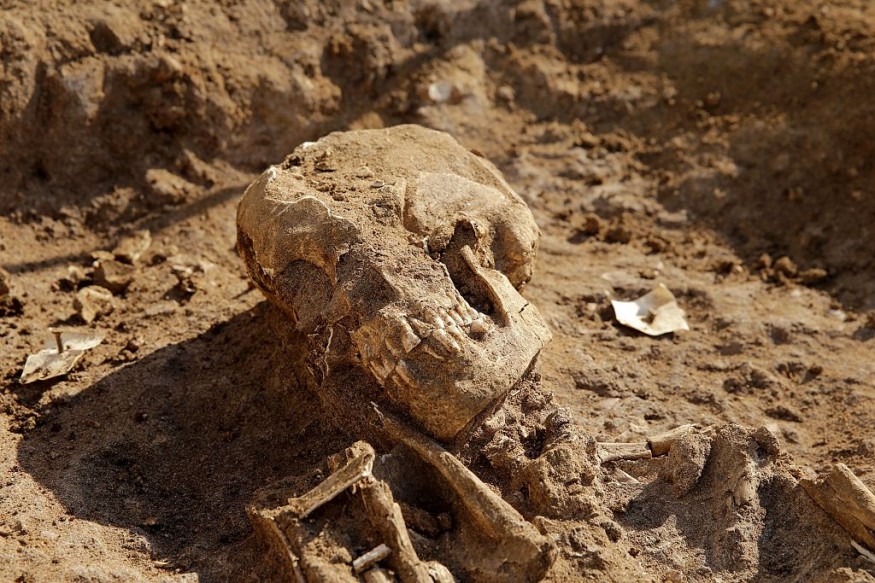Perhaps one of the extraordinary things archeologists unearthed so far is at the lignite mines where a 1st century B.C. woman with a headdress of a gold laurel was found lying on a bronze bed with mermaid decorations in Greece.
The excavation site was near the city of Kozani in northern Greece and dated back 2,100 years ago. The bed where the woman lies has an image of a bird holding a snake in its mouth, symbolizing the Greek god Apollo. Since the woman was buried thousands of years ago, the wooden parts of her bed have already decomposed, Live Science reported.

Discovering the Mysterious Woman Buried in Ancient Greek Tomb
Ephorate of Antiquities of Kozani director Areti Chondrogianni-Metoki told Live Science that they found gold laurel leaves on the woman's head that were likely part of a wreath. There were also gold threads found on the woman's hands that were most likely from embroidery.
— Stephen Ames Berry (@writerredux) June 4, 2022
The team discovered other artifacts in the tomb, such as four clay pots and a glass vessel, but no other person was buried with the woman. Archaeologists analyze the skeleton to know the woman's age, health, and possible cause of death. They believe that the artifacts they found could indicate that she came from a wealthy background, perhaps even from a royal family.
Chondrogianni-Metoki told the news outlet that they are still unsure of the woman's whole story and the area where they found her skeleton. But a few thousands of years ago, Kozani was near the city of Mavropigi, which was home to a sanctuary for the Greek god Apollo.
Moreover, Greece in the 1st century B.C. was influenced by the Roman empire, which destroyed the city of Corinth in 146 B.C. and sacked Athens in 86 B.C., triggering a crucial battle between Greeks and Romans in what is now known to be the Battle of Pharsalus. Julius Caesar and his force won, which led to him being the de facto ruler of Rome,
They are also still investigating whether the woman lived in the 1st century B.C. or witnessed or heard the events during that time. They put the remains at the Archaeological Museum of Aiani in Greece.
Burial in Ancient Greece
Ancient Greeks have always connected their conception of the afterlife to their burial. In the classic story of Odyssey, Homer describes the Underworld as a place located deep beneath Earth where Hades, Persephone, Zeus, and Poseidon watch drifting crowds of shadowy figures of those who had died.
An article from The Met Museum's website says that ancient Greeks believed that the psyche or spirit of a dead person leaves the body as a little breath or puff of wind at the moment of their death. Then, their bodies will be prepared for burial according to their rituals. They value a proper burial for their dead and see the omission of burial rites as an insult to human dignity.
Relatives and friends would come to mourn, pray, and give respect to the dead, which is an event depicted in Greek art as early as the Geometric period. Very few objects are placed in the rectangular tombs with marble steel and statues erected to mark the grave.
Most lavish burial sites were common in the sixth century for aristocratic families. But Athenian families in the fifth century buried their loved ones in simple stone sarcophagi placed on the ground.
RELATED ARTICLE : 6,600-Year-Old Grave Sites Revealed Social and Economic Inequality Happened Even in Prehistoric Times
Check out more news and information on Archaeology in Science Times.
© 2025 ScienceTimes.com All rights reserved. Do not reproduce without permission. The window to the world of Science Times.












